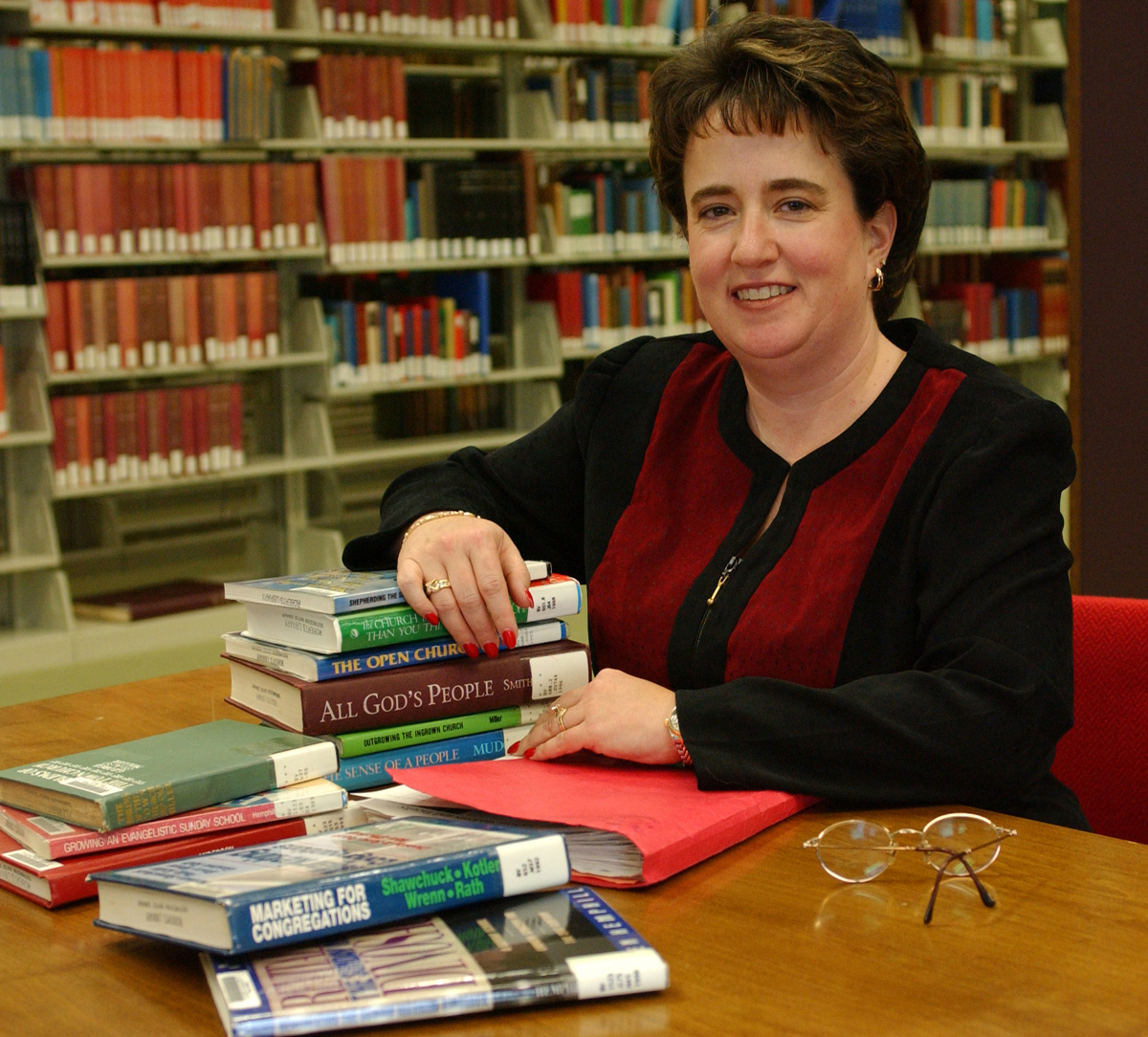
FORT WORTH, Texas (BP)–A Southern Baptist PhD student’s study into the differences among Texas Baptist churches has earned her the Southern Baptist Research Fellowship’s Outstanding Research Award.
Terri Stovall’s dissertation, A Study of the Differences Between Growing, Declining, Plateaued and Erratic Growth Southern Baptist Churches in Texas, examines reasons for churches to be in each of the categories.
Along with a plaque and monetary award, Stovall will present her findings next year at the Research Fellowship’s annual meeting in September. Stovall is earning a PhD in church administration at Southwestern Baptist Theological Seminary. Her dissertation competed with papers from students at the six SBC seminaries.
“I was shocked that I won,” Stovall said, “mainly because I look at it under a microscope and see what I would do differently. I’m just surprised it did so well.”
The Southern Baptist Research Fellowship consists of people from various state conventions, SBC agencies, seminaries and colleges, said Robert Mathis, professor of administration at Southwestern. Mathis submitted Stovall’s work for consideration. “It’s the kind of research they are impressed with because it dealt with church growth and health issues,” he said.
“Terri worked with Clay Price at the Baptist General Convention of Texas. He was interested in finding definitive figures on the relationship on growing, plateaued and declining churches, whether it was internal or external factors.
“She found out it was a combination of those variables,” Mathis added.
“I serve in two different churches in the Metroplex 10 miles apart,” Stovall said. “One seemed like no matter what we did it kept declining; the other — no matter what we did — kept growing. So I wanted to find out what was the difference between a church that kept declining and one they kept growing.”
The Corpus Christi, Texas, native began with a population of 2,622 SBC churches in Texas, of which each was classified into one of the four categories: Growing Churches, Plateaued Churches, Declining Churches and Erratic Growth Churches — churches which might see increases one year and decreases the next.
Of the total number of churches, a random sampling of 310 churches was conducted. Of those, 181 churches responded and 169 responses were used. She used three measurement tools, the Annual Church Profile, demographic reports and a survey mailed to pastors of the sample churches.
Stovall, who has served in two Fort Worth/Dallas-area churches, most recently at Fielder Road Baptist in Arlington, said she wanted to understand what made some churches grow seemingly effortlessly, while others did not despite their best efforts.
Her research came up with eight conclusions:
— “Church growth is a multivariate issue and cannot be accounted for by single cause explanations.” Multiple variables affect the growth, or lack of growth in a church.
— “Growing churches exist in highly changing neighborhoods and respond well to that change whether it is overall population change or racial change.” Growing churches recognize the changes in its neighborhood and adapt to it.
— “Worship style should be viewed as a possible barrier to church growth rather than a cause of church growth.” The majority of churches identified as declining indicated a traditional or revivalist worship style. However, 8 of the 33 growing churches in the study did indicate a traditional style of worship. Stovall said that those churches recognized that traditional worship can be a barrier and have compensated for it in other areas of church life.
— “Growing churches tend to be larger churches than those who are Plateaued, Declining, or Erratic Growth churches.”
— “Growing churches have a larger percentage of resident members who attend worship than other church types.” Growing churches averaged 56 percent of their resident members attending worship. The other three groups averaged fewer than 50 percent. “This may indicate that a Growing Church is not only attracting new members but also keeping the ones that they have,” her report said.
— “Growing churches have a larger baptism-to-membership ratio than other church types.” In the study, growing churches averaged five baptisms for every 100 resident members.
— “Neither the median age of the population nor the number of children in the neighborhood play a significant role in whether a church is growing or declining.”
— “The age of the church is not related to church growth. Older churches can be growing churches just as younger churches can decline.”
Mathis said he thought some results were pleasantly surprising, including that location was not as important an issue as some have said in the past. He was also pleased to learn that worship style was not a factor for growing churches. The research was well done, he said, because Stovall had a good sample, a large sample and a random sample.
“She’s an excellent student, very energetic student and usually brings in more than you ask,” he said. “She did good work. It reflects well on the seminary.”
Stovall talked to pastors throughout Texas for her research, and what impressed her most, she said, was learning that “we’ve got some good pastors out there. Our pastors in Texas really want to do what God wants them to do.”
Stovall became a Christian at the age of 16 at the youth camp of First Baptist Corpus Christi, Texas. The Christians in her youth group ministered to her during the difficult time while her parents were going through a divorce. While one part of her foundation was crumbling, she said they helped her find a steady foundation.
Stovall earned a master of art in religious education degree from Southwestern in 1991. Her husband is a general contractor and built Krispy Kreme shops and other restaurants in the Fort Worth/Dallas Metroplex. She hopes to teach at Southwestern or at another Christian institution after earning her PhD.
–30–
(BP) photo posted in the BP Photo Library at http://www.bpnews.net. Photo title: TERRI STOVALL.
















